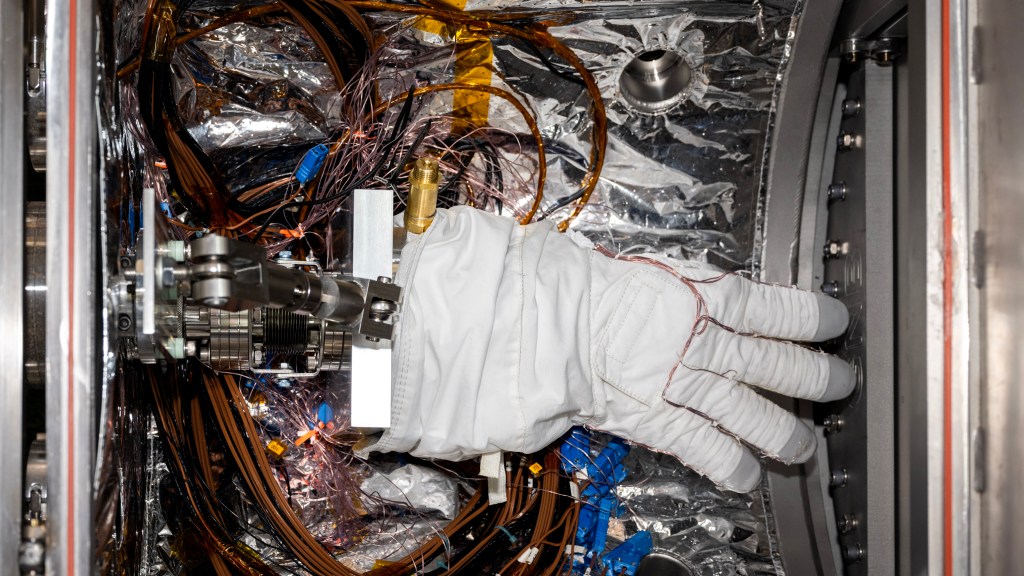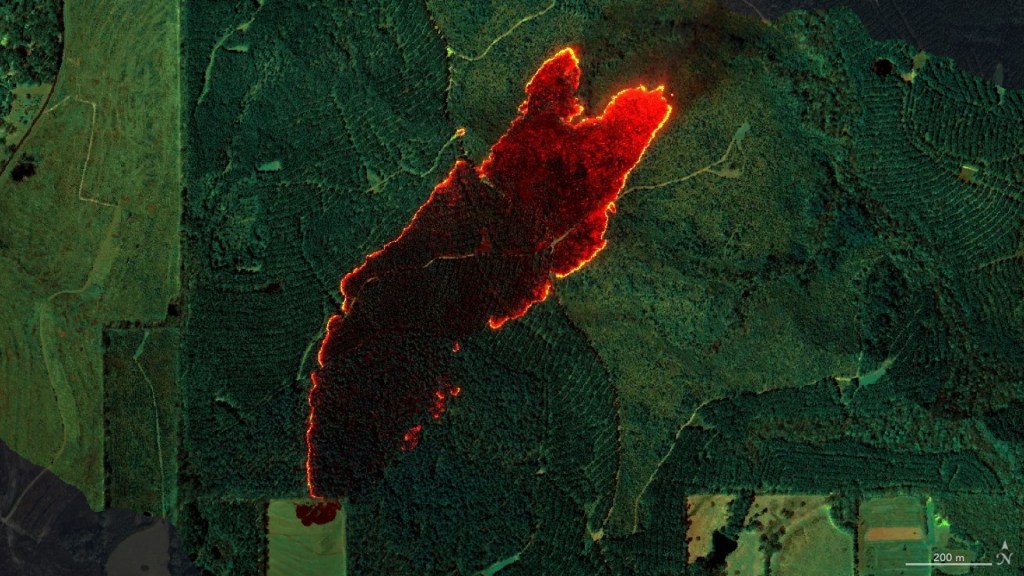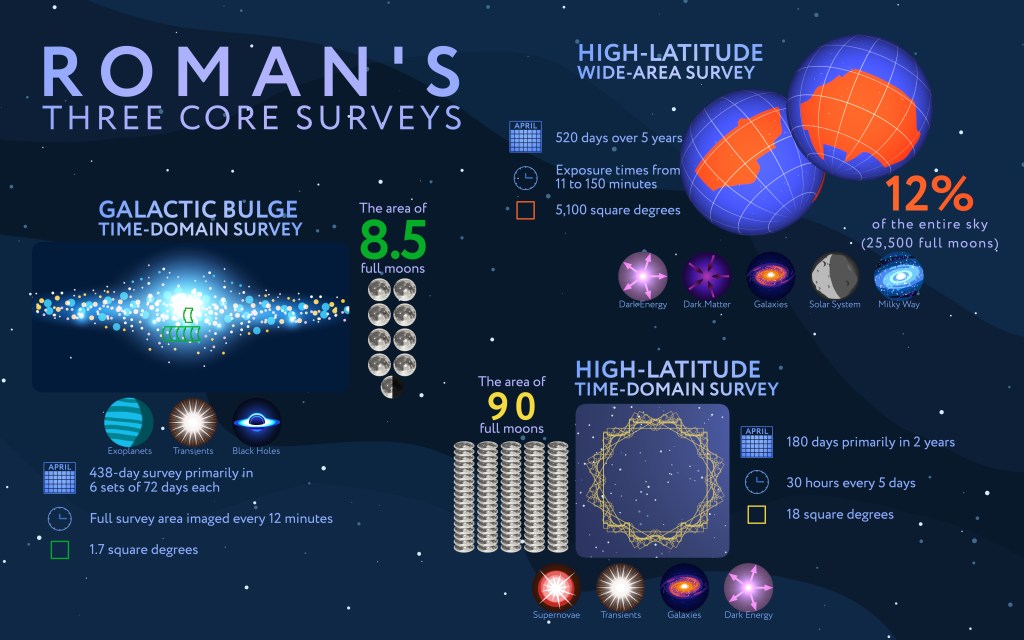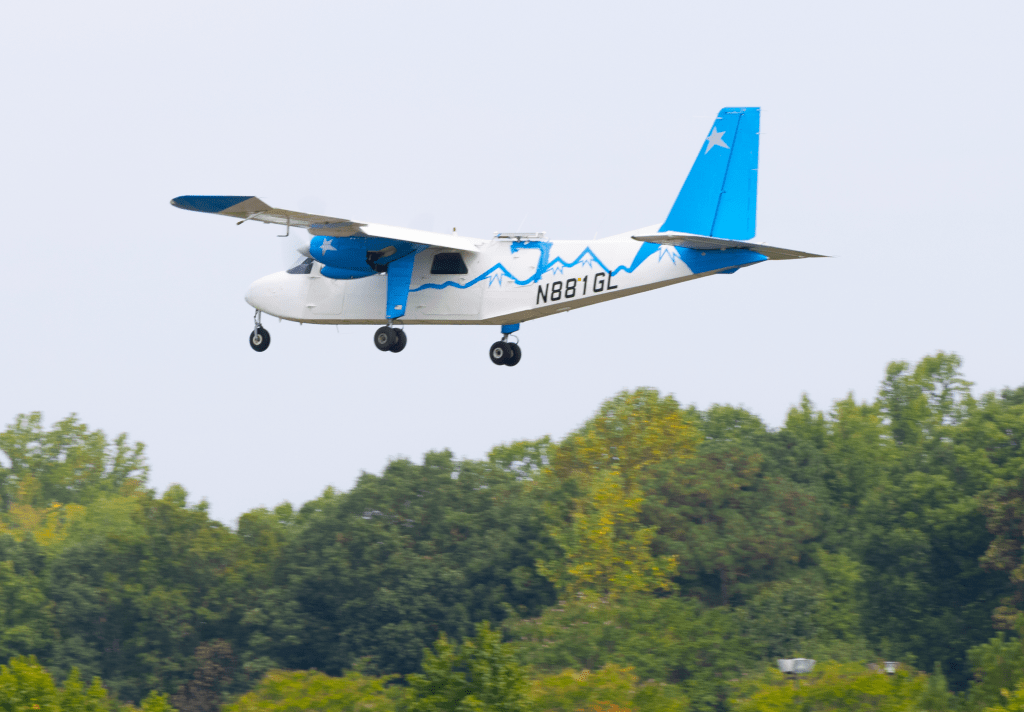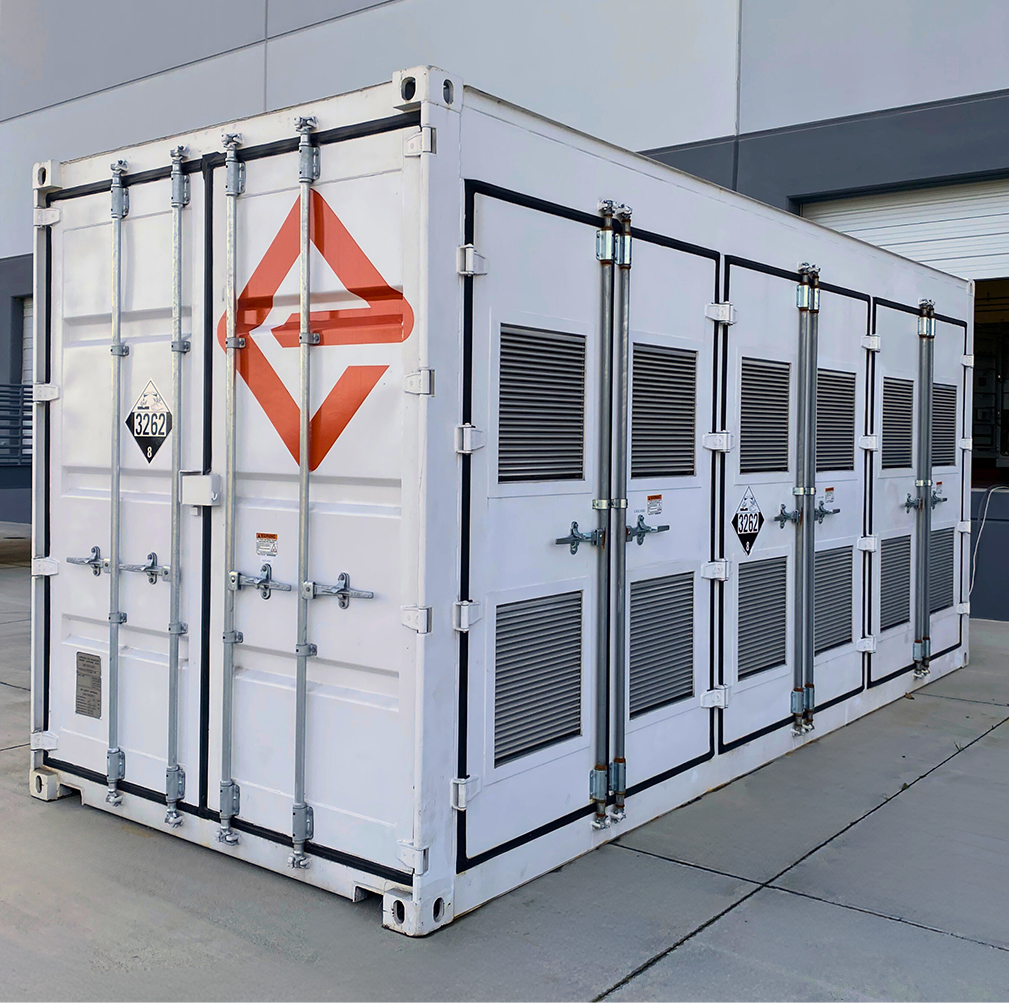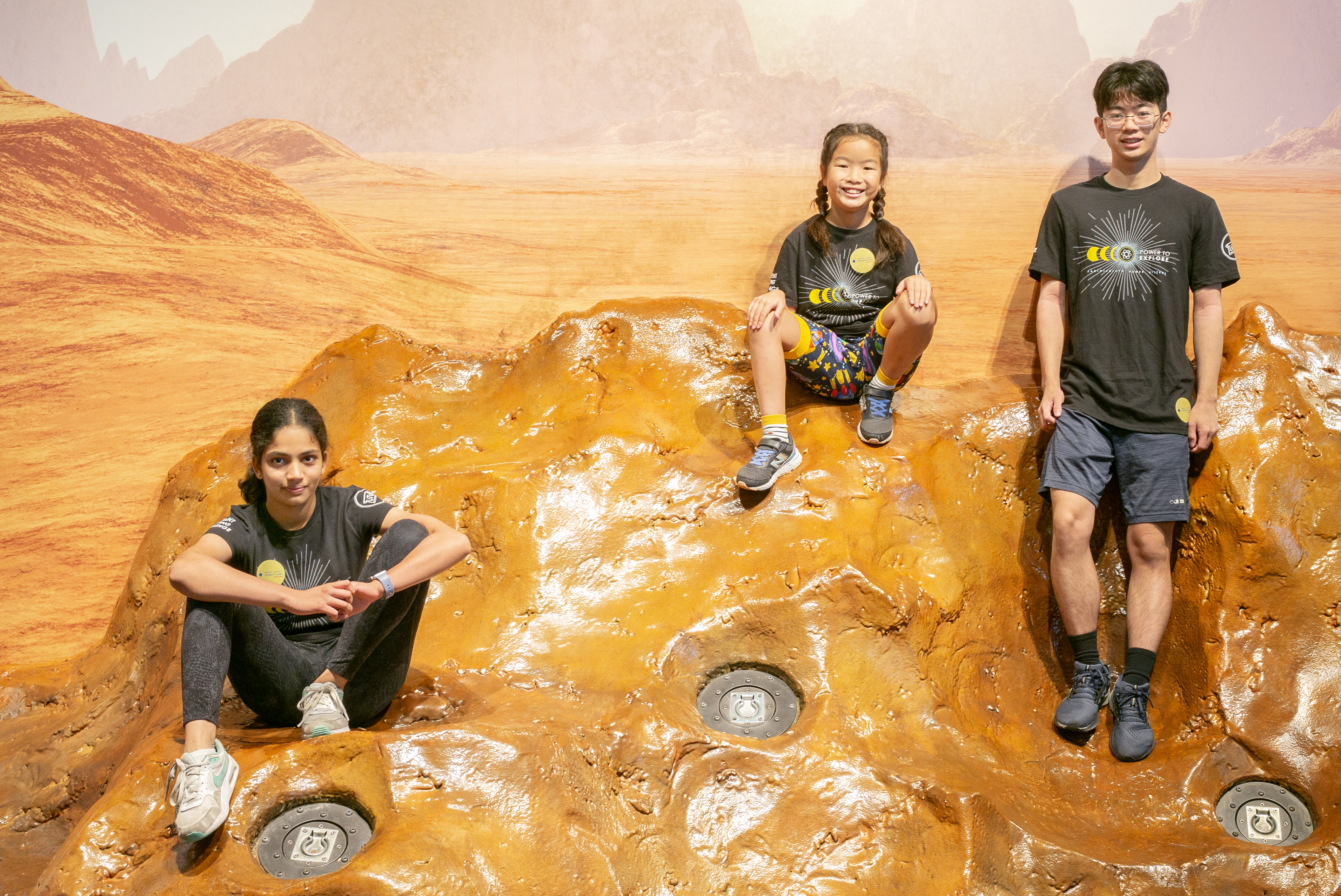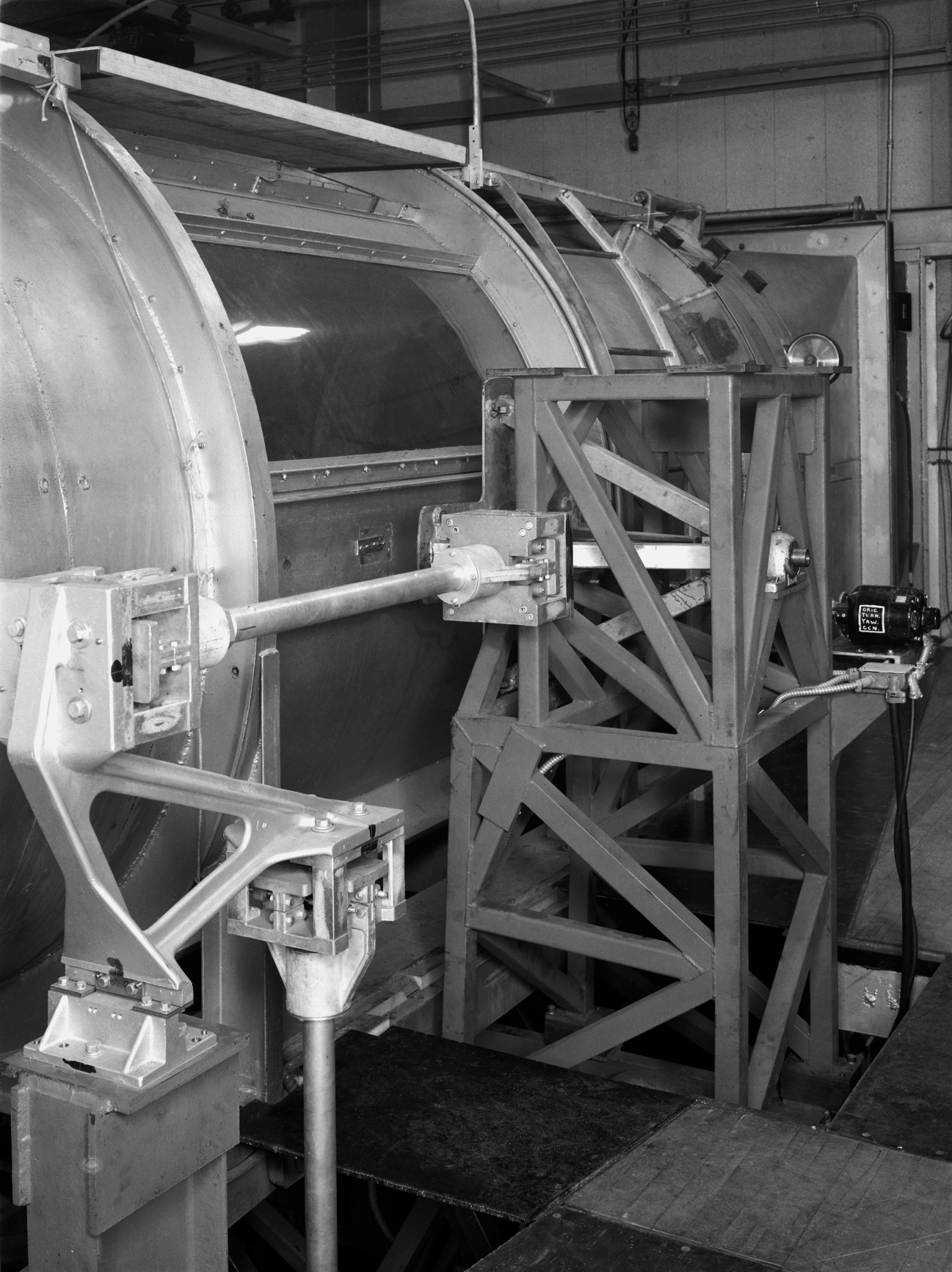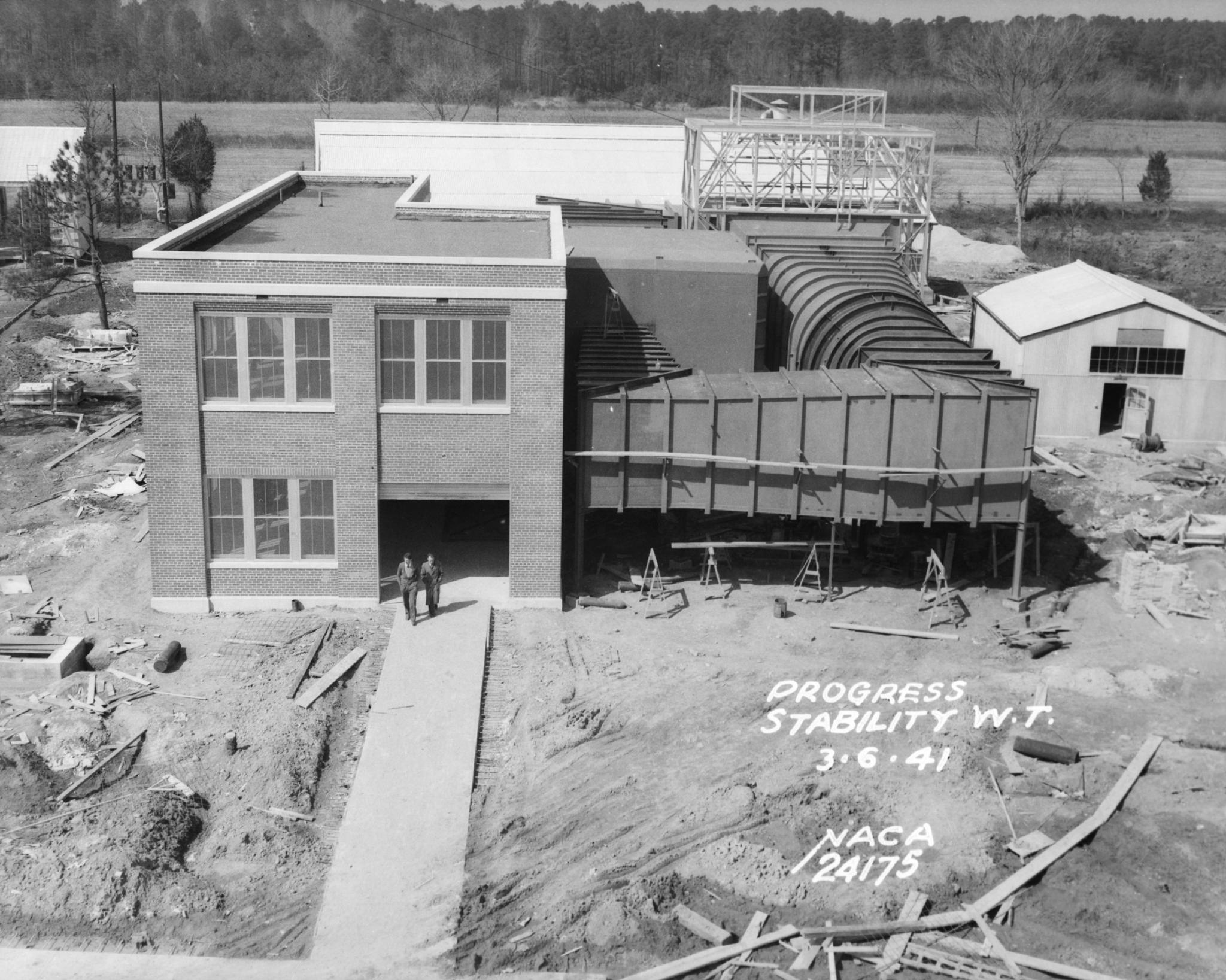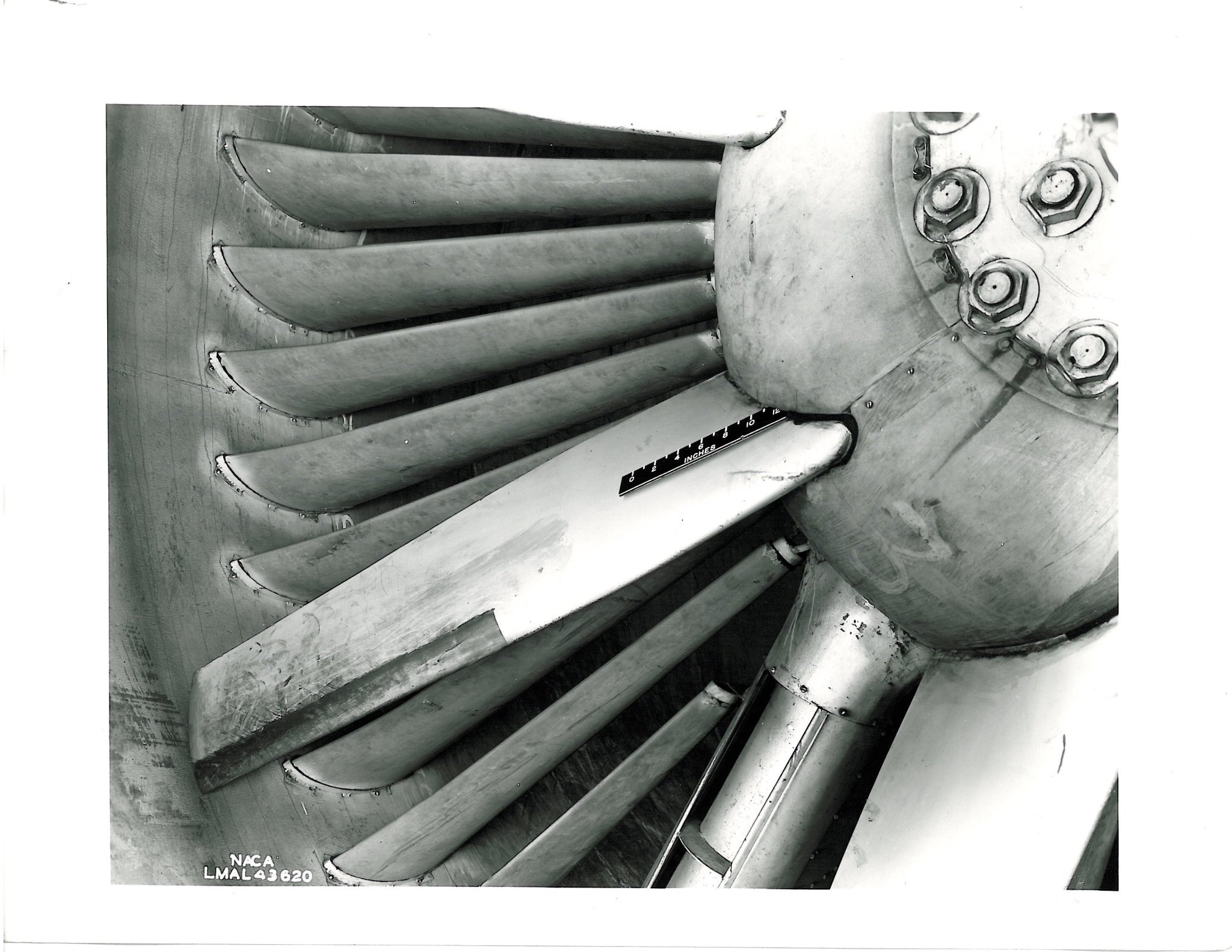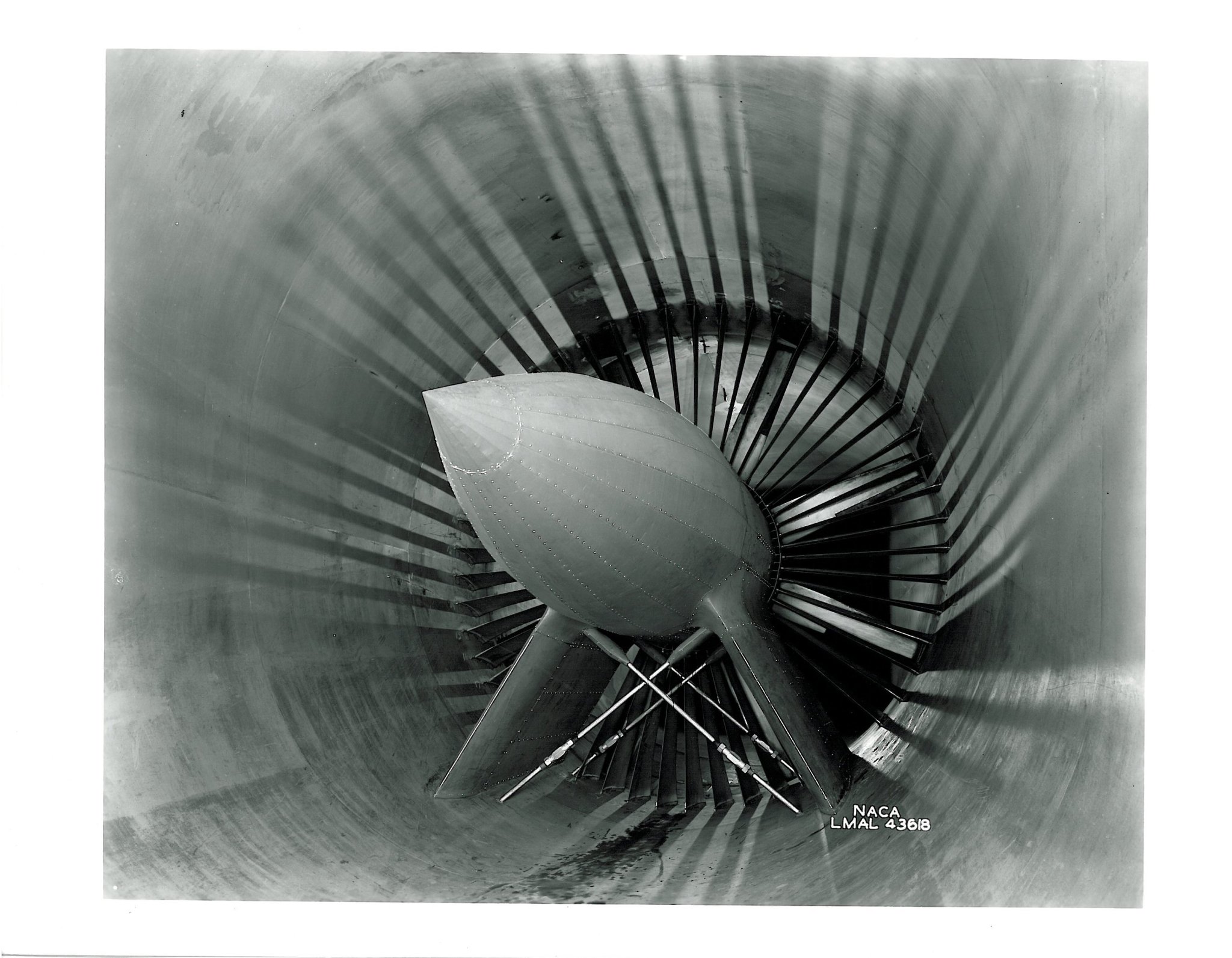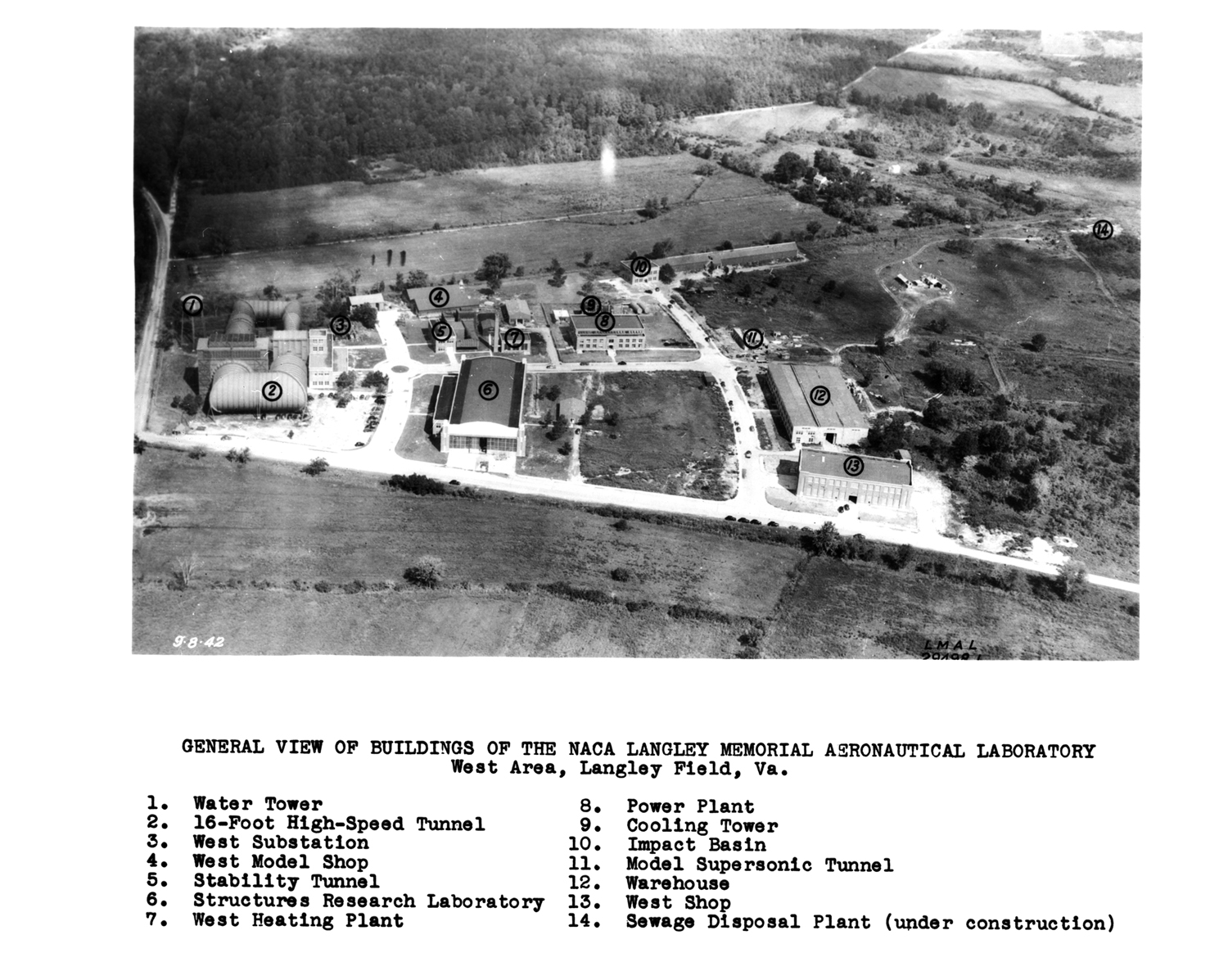Quick Facts
Year Built: 1941
Historic Eligibility: National Register Eligible
Year Demolished: 2011
History
By the late 1930s, progress in the NACA’s research on stability and control had rapidly advanced based on experimental work carried out in the Full-Scale Tunnel and the first NACA 7- by 10-Foot Atmospheric Wind Tunnel. The work in stability studies became so intense that another facility was needed to augment the existing tunnels and to complement them with unique dynamic measurements.
The estimation of the dynamic flight characteristics of aircraft required knowledge of the aerodynamic forces and moments arising from the orientation of a wind-tunnel model with respect to the air stream. This data was provided by conventional tunnel tests. However, the estimates of flight characteristics also depend on aerodynamic effects due to the rate of angular displacement with respect to the air stream, such as rolling and yawing.
In 1939, Langley received authorization to proceed with the construction of a new tunnel that could simulate the effects of an aircraft in rolling, pitching, and yawing flight by creating curved and rolling flows in the test section. It could also conduct standard straight-flow stability tests.
The Langley Stability Tunnel began operations in late 1941 as a simple, continuous-flow tunnel with two interchangeable test sections. The first test section was a square 6- by 6-foot section used for straight-flow or curved-flow tests. For curved-flow tests, the vertical tunnel side walls were designed to have enough flexibility to be deflected into a curved shape to produce curved flow around the model. The walls were curved by use of a series of jack screws positioned at intervals along the test section that pushed and pulled the wall sections into shape. The second test section was a round 6-ft section which had a powered rotor located upstream of the test section to generate rolling flow to simulate the velocity distribution on the model that would be experienced in rolling flight.
The Stability Tunnel had a mechanized balance system to measure all six components separately, three forces, three moments. Each scale had a balance arm with a lead screw powered by a motor that was positioned on a knife edge and moved the lead weight along the lead screw. It also had a weight changing mechanism that would add or remove additional weights at the end of the balance arm automatically. The cabinets containing the balance were mounted on a platform that rolled along the railroad rails fastened to the concrete floor so that the unit could be repositioned to a different location when the tunnel walls were curved, thus keeping the model mounting point in the center of the tunnel cross section.
The tunnel was powered by a 600-horsepower electric motor driving a 14-foot diameter eight-bladed propeller. Maximum wind speed was about 250 mph. Numerous tests of static and dynamic aerodynamics were conducted in the tunnel on fundamental generic airplane models as well as specific airplane designs.
A very large data base was derived for design handbooks and estimation procedures for aerodynamic parameters. In 1958, the Stability Tunnel was dismantled and reassembled on the campus of Virginia Polytechnic Institute and State University in Blacksburg, Va., where it served as an educational and research and development tool.
After removal of the tunnel, the remaining brick and mortar portion of the building was adapted for use as an office building and initially functioned as the Dispensary Office of Patent Counsel. When demolished in 2011, the first floor had been serving as the center’s Medical Clinic and the second floor as the Inspector General’s office.
Technical reports about the work done in this facility can be found on the NASA Technical Reports Server.


